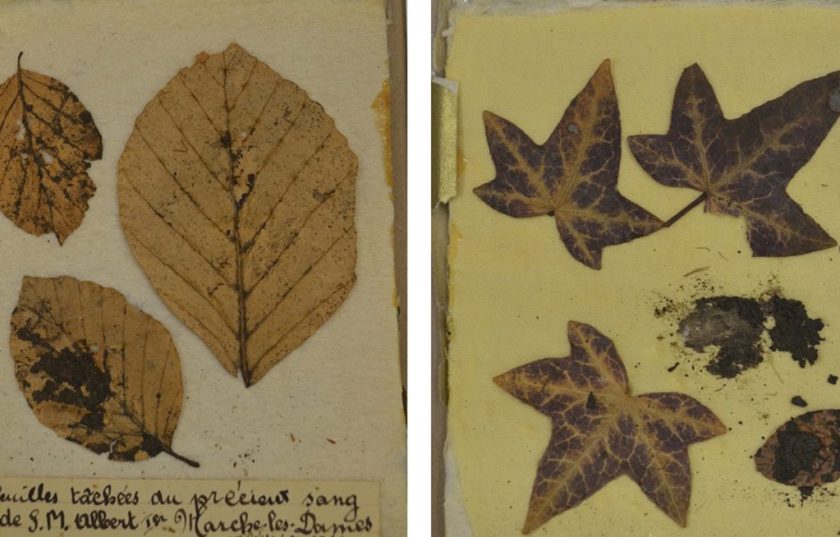
When Belgium’s King Albert I was found dead at the bottom of a cliff in Marche-les-Dames, Belgium, in February of 1934, no one was quite sure how he got there. The official line was that the king, an avid outdoorsman, fell from the cliff while climbing by himself.
But others (particularly those fond of conspiracies) theorized that the king either killed himself or was murdered elsewhere, and was then transported to the cliff to make it look like an accident.
The incident remained a mystery for decades. But new research done on the bloody leaves that were found at the site of the king’s death has helped illuminate what transpired that night.
A team led by forensic geneticist Maarten Larmuseau of the University of Leuven (Belgium) took a look at the leaves, which had been mounted and later purchased by a journalist. Larmuseau and his group found that genetic material in the blood on the leaves matched two of the king’s living relatives, one from each side of his family.
The researchers say that this confirms that the blood on the leaves was indeed the king’s blood. Furthermore, they conclude that this new evidence, combined with the old evidence, disproves the conspiracy theories.

“There were not witnesses, so we will never know the truth,” Larmuseau told Archaeology magazine. “But the most likely hypothesis is that he just fell.”
If you’re like us, you might be thinking: Couldn’t someone have murdered the king at the base of the cliff (or pushed him off), resulting in the king’s blood dripping on the leaves? RealClearLife posed this exact question to Larmuseau by email. His response:
“Of course, King Albert can still have been murdered on that place in Marche-les-Dames. Nevertheless, all current conspiracy theories declare that he should be murdered in Brussels or somewhere else and that the whole place in Marche-les-Dames was a mise-en-scene and that the dead body was never at that place. Therefore, our research reveals an important new finding that links the king with the rock wall of Marche-les-Dames.”
So there you have it. Case closed… for now.
—Shawn Donnelly for RealClearLife
This article was featured in the InsideHook newsletter. Sign up now.






















